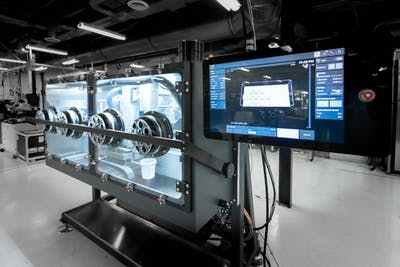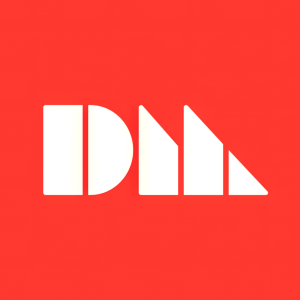Desktop Metal Expands Its Production System Lineup With New Printer Designed to Bridge Process Development and Full-scale Metal Parts Mass Production
Desktop Metal (NYSE: DM) has commenced global shipments of its new P-1 printer, expanding its Production System™ lineup with a device aimed at bridging process development and mass production of metal parts. The P-1, leveraging Single Pass Jetting™ technology, is designed for companies like Ford Motor Company, which will receive its unit this month. This printer enables efficient production of small, complex parts and allows for innovative material experimentation, enhancing the path towards large-scale manufacturing.
- P-1 printer has started global shipments, expanding Desktop Metal's product line.
- P-1 enables efficient production with speeds up to 10 times higher than legacy systems.
- Collaboration with major industry players, including Ford, enhances market credibility.
- The printer supports low-cost, third-party materials, driving cost efficiency.
- None.
Desktop Metal (NYSE: DM), a leader in mass production and turnkey additive manufacturing solutions, today announced the new P-1 printer has begun global shipments and joins the Production System™ lineup alongside the flagship P-50 printer. Designed to serve as a bridge from process development to full-scale mass production of end-use metal parts, the P-1 leverages the same patent-pending Single Pass Jetting™ (SPJ) technology and core additive manufacturing benefits for companies and research institutions alike at the size and scale of serial production. The P-1 is now available for order and has already begun to ship to initial customers, including to the Ford Motor Company, which will receive its printer this month.

Desktop Metal expands its Production System lineup with a new printer, P-1, designed to bridge process development and full-scale metal parts mass production. (Photo: Business Wire)
“We know industrial businesses around the world are eager to begin working with the Production System P-50 and benefit from the fastest, most cost-effective way to manufacture metal parts of all levels of complexity at-scale,” said Ric Fulop, CEO and co-founder of Desktop Metal. “Adding the P-1 to our Production System portfolio serves as a key enabler for these companies as they look to develop processes and materials on a smaller scale before ramping up to mass production volumes. Similarly, many businesses and research institutions are also interested in leveraging the economics and quality of SPJ technology for mid-volume serial production, making the P-1 an ideal fit and a great stepping-stone to broad adoption of Desktop Metal’s technology and flagship P-50 printer.”
The Ford Motor Company is among the first early adopters to purchase the new Production System P-1.
“Ford has been active in 3D printing since 1988 with acquisition of the third commercially available stereolithography (SLA) system; we are very excited to be early adopters of the P-1,” said Cynthia Flanigan, Director, Vehicle Research and Technology, Ford Research and Advanced Engineering. “We expect that this new system will serve as an important tool in the development of our future advanced process and alloy implementation, enabling our researchers to investigate additional production opportunities of metal binder jetting at Ford Motor Company. Our early collaboration with Desktop Metal highlighted the need for a lab scale system that is aligned with the functionality of the production scale system so we can further develop expertise around this process.”
A Shared SPJ Technology Architecture Enables Direct Process Transfers Between the P-1 and P-50
Created by leading inventors of binder jetting and single-pass inkjet technology, the Production System P-50 is an industrial manufacturing solution designed to achieve speeds up to 100 times those of legacy PBF additive manufacturing technologies(1), enabling production quantities of up to millions of parts per year at costs competitive with conventional mass production techniques.
The P-1 offers a new form factor to bridge the gap between benchtop process development and mass production, leveraging the same patent-pending SPJ technology and print carriage design as on the P-50 but with enhanced process flexibility. Also similar to the P-50, the P-1 features a state-of-the-art print bar with native 1200 dpi, advanced printhead technology that supports a wide variety of binders, and an inert processing environment to support both non-reactive and reactive materials, a key benefit for businesses and research institutions looking to experiment with a variety of materials. As a result, materials research and new application development conducted on the P-1 can be transferred directly onto the P-50 to scale to mass production, without the need to take this more industrial manufacturing solution offline for R&D activities, enabling efficient process development and new product introductions.
“For many businesses like Ford, the P-1 will serve as a learning lab for processes as they look to scale up to full production,” said Fulop. “Research institutions are also eager to adopt the Production System P-1 to experiment, validate materials, and test a variety of use cases for metal binder jetting with a smaller build box that offers all of the benefits of SPJ technology, including speed, quality, and reliability.
The P-1 Offers Cost-Effective, Serial Metal Parts Production for Small & Complex Parts
SPJ technology on the P-1 is designed to print each layer in less than three seconds, including powder deposition, powder compaction, anti-ballistics, binder deposition, and printhead cleaning. At this maximum build rate, the P-1 can achieve production throughputs 10 times higher than those of legacy PBF systems(1) and fast enough to complete a full build in less than one hour. The P-1’s open material platform and inert process environment allow customers to use low-cost, third-party metal injection molding powders across a variety of materials, making the P-1 suitable for cost-effective serial production of small and complex parts in addition to smaller scale process development activities. Powder reclaimed during the printing and depowdering process can be recycled for future use, driving further cost efficiencies and resulting in a more environmentally friendly manufacturing process. In addition, the tooling-free manufacturing process on the P-1 facilitates quick turnovers to new jobs along with the ability to print many complex geometries simultaneously with no print supports required.
P-1 customers will also gain access to Desktop Metal’s Fabricate® manufacturing build preparation software, as well as to the Company’s newly-released Live Sinter™ application, which dynamically simulates the sintering process and automatically generates print-ready geometries that compensate for the shrinkage and distortion that take place during sintering, minimizing process trial and error while improving accuracy.
The flagship Production System printer, the P-50, remains on schedule to begin volume commercial shipments in 2021, paving the way for the mass production of end-use parts, and unlocking throughput, repeatability, and competitive part costs. For more information on the P-1, the P-50, and Production System technology, visit https://www.desktopmetal.com/products/production.
About Desktop Metal
Desktop Metal, Inc., based in Burlington, Massachusetts, is accelerating the transformation of manufacturing with end-to-end 3D printing solutions. Founded in 2015 by leaders in advanced manufacturing, metallurgy, and robotics, the company is addressing the unmet challenges of speed, cost, and quality to make 3D printing an essential tool for engineers and manufacturers around the world. Desktop Metal was selected as one of the world’s 30 most promising Technology Pioneers by the World Economic Forum; named to MIT Technology Review’s list of 50 Smartest Companies; and recognized among the most important innovations in engineering in Popular Science’s “Best of What’s New.” For more information, visit www.desktopmetal.com.
Forward Looking Statements
This document contains certain forward-looking statements within the meaning of Section 27A of the Securities Act of 1933, as amended, and Section 21E of the Securities and Exchange Act of 1934, as amended. Forward-looking statements generally relate to Desktop Metal’s future financial or operating performance. These forward-looking statements generally are identified by the words “believe,” “project,” “expect,” “anticipate,” “estimate,” “intend,” “strategy,” “future,” “opportunity,” “plan,” “may,” “should,” “will,” “would,” “will be,” “will continue,” “will likely result,” and similar expressions, including the negatives of such terms. Forward-looking statements are predictions, projections and other statements about future events that are based on current expectations and assumptions and, as a result, are subject to risks and uncertainties. Many factors could cause actual future events to differ materially from the forward-looking statements in this document, including but not limited to: (i) the ongoing COVID-19 pandemic and measures taken by Desktop Metal, its customers and suppliers, and governmental authorities in response thereto; (ii) the possibility that the Company may be adversely affected by other economic, business, and/or competitive factors, including downturns in the highly competitive additive manufacturing industry; (iii) the ability to implement business plans, forecasts, and other expectations and identify and realize additional opportunities; and (iv) other risks and uncertainties set forth in the section entitled “Risk Factors” and “Forward-Looking Statements; Market, Ranking and Other Industry Data” in the registration statement on Form S-4 initially filed by the Company with the U.S. Securities and Exchange Commission (the “SEC”) on September 15, 2020, as amended, and the Company’s other filings with the SEC. These filings identify and address other important risks and uncertainties that could cause actual events and results to differ materially from those contained in the forward-looking statements. Forward-looking statements speak only as of the date they are made. Readers are cautioned not to put undue reliance on forward-looking statements, and the Company assumes no obligation and does not intend to update or revise these forward-looking statements, whether as a result of new information, future events, or otherwise. The Company does not give any assurance that it will achieve its expectations.
(1) Based on published speeds of single-laser, mid-range laser powder bed fusion systems as of August 25, 2020.
View source version on businesswire.com: https://www.businesswire.com/news/home/20201217005572/en/
FAQ
What is the P-1 printer by Desktop Metal?
When did Desktop Metal announce the global shipments of the P-1 printer?
Who are the early adopters of the P-1 printer?
How does the P-1 printer improve production efficiency?







